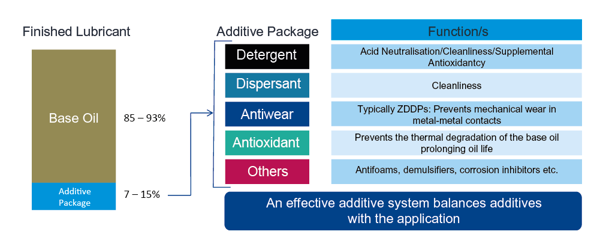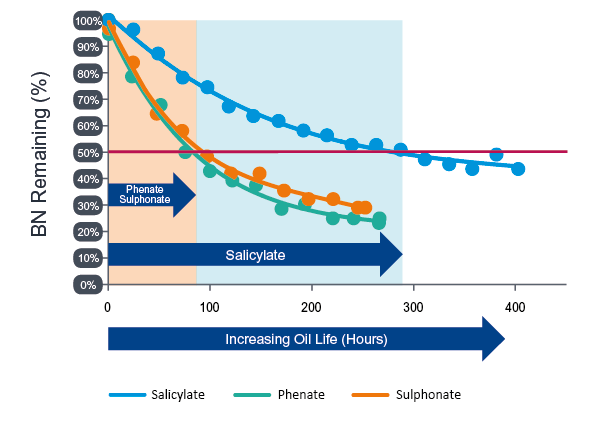Gas Engines
Smooth operation for over 90,000 hours
28 August 2024
12 October 2016
Next generation gas engines need advanced additive technology

Gas engines are changing, becoming more efficient, more powerful and more complex. Jonathan Hughes, Infineum Lubricant Development Technologist, talks about the ways lubricants can be designed so that they deliver enhanced protection to next generation gas engines while maintaining oil drain intervals.
Stationary reciprocating gas engines are typically used in the production of electricity and in the compression and transportation of gas in pipelines.
As gas engine customers look to maximise their return on investment the demand for engines with greater specific power outputs is increasing. This desire for improved efficiency, combined with the need to reduce emissions, has spurred gas engine manufacturers to introduce a number of design changes to modern gas engines. The latest high efficiency engines generally have tighter tolerances and reduced clearances for engine components, higher compression ratios, increased turbocharger pressures and improved combustion and valve timing.
Design changes have created a harsh environment for the engine lubricant, which is now subjected to higher temperatures in the piston zone and higher pressures.
However, despite these more challenging conditions, the latest gas engines demand more protection from less lubricant. Not only is exceptional hardware protection over longer oil drain intervals required, but also this must be achieved with reduced oil consumption, which means that since there will be less top-up with fresh lubricant, the oil needs to work harder for longer.
These demands spark questions around the ability of current additive technologies to provide the same level of engine protection that is achieved in today’s hardware over the expected oil drain duration. This uncertainty may result in shorter oil drain intervals. This is a very undesirable outcome for end users who are looking to improve the return on their investment by maximising uptime, maximising generating efficiency and reducing running costs.
Taking the engine out of service for an unscheduled oil drain or incurring additional maintenance costs can negate any efficiency gains achieved by design changes.
To keep these latest engines reliably in service for longer, the formulation of the lubricant additive system needs to be enhanced so that it provides better protection in the increasingly challenging chemical environment. Higher quality lubricants can help to maximise the performance of modern gas engines and allow them to be operated at higher temperatures and pressures for longer periods, without increasing the risk of engine damage.
Additive component choice is critical in prolonging lubricant life while providing sufficient protection to the latest gas engines.
Next generation gas engine oils contain a complex mixture of chemicals that must be carefully balanced to protect the engine over the required drain interval. To support the additive package the choice of base oil is also crucial in defining robust lubricating oils for future engine demands.

Next generation gas engine oils contain a complex mixture of chemicals
Detergents are key additive components, which can help to both reduce deposit formation and control acids. However, not all detergents are the same and it is essential to choose the best detergent chemistry to deliver the best performance in this application. In bench testing salicylate-based detergents demonstrated superior cleanliness in the Microcoking test when compared to sulphonates or phenates. In addition, salicylate showed the most robust oxidation and nitration performance in fired engine testing.
In the latest gas engines, changes in the piston design have put the lubricant closer to the combustion zone. This has not only increased oil oxidation, but also impacts other used oil parameters. For example, base number can be rapidly depleted, which reduces the lubricant’s ability to neutralise combustion acids. In fired engine testing, salicylate technology demonstrated improved base number retention and acid control.

In this recent gas engine oil development programme Infineum used a variety of tests to assess the effectiveness of various additive chemistries. It has been noted in this work that the correlation between bench and engine tests can be poor. Although bench engine tests can provide a useful way to probe the challenges presented by the latest engines, they are not always a reliable way of screening oils. However, by understanding the tests themselves and the chemistry at play, some bench tests can be modified to give a better correlation to the field.
Developing lubricants for the latest high efficiency engines requires in-depth formulation knowledge to ensure the right additive chemistry combinations are carefully balanced to deliver the desired performance.
A correctly tailored chemical additive package can help reduce the risk of ring sticking, bore polish, filter-plugging and bearing damage in modern gas engines. And, in addition to this hardware protection, advanced lubricant technology can also enable operators to keep their engines running efficiently for longer.
Sign up to receive monthly updates via email